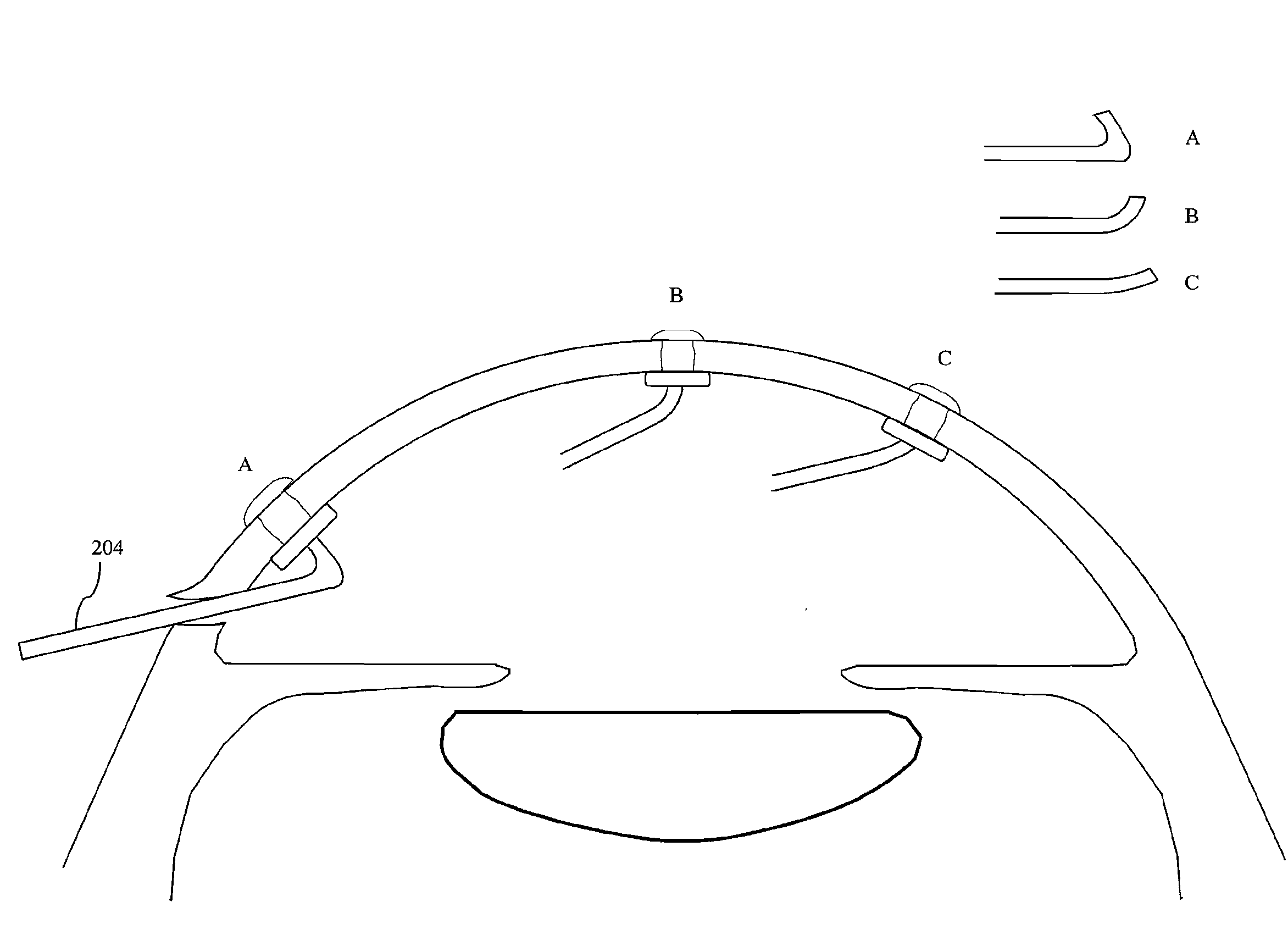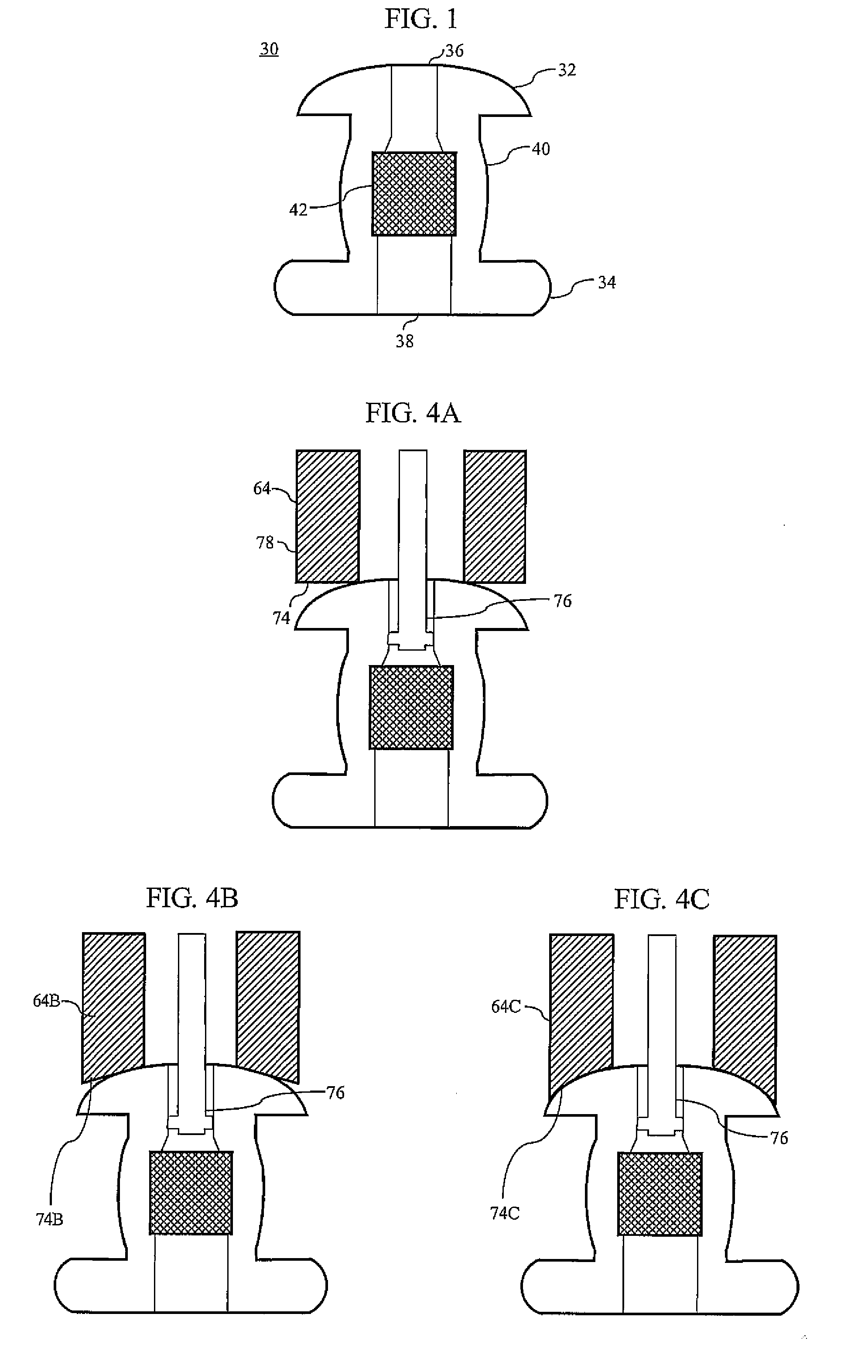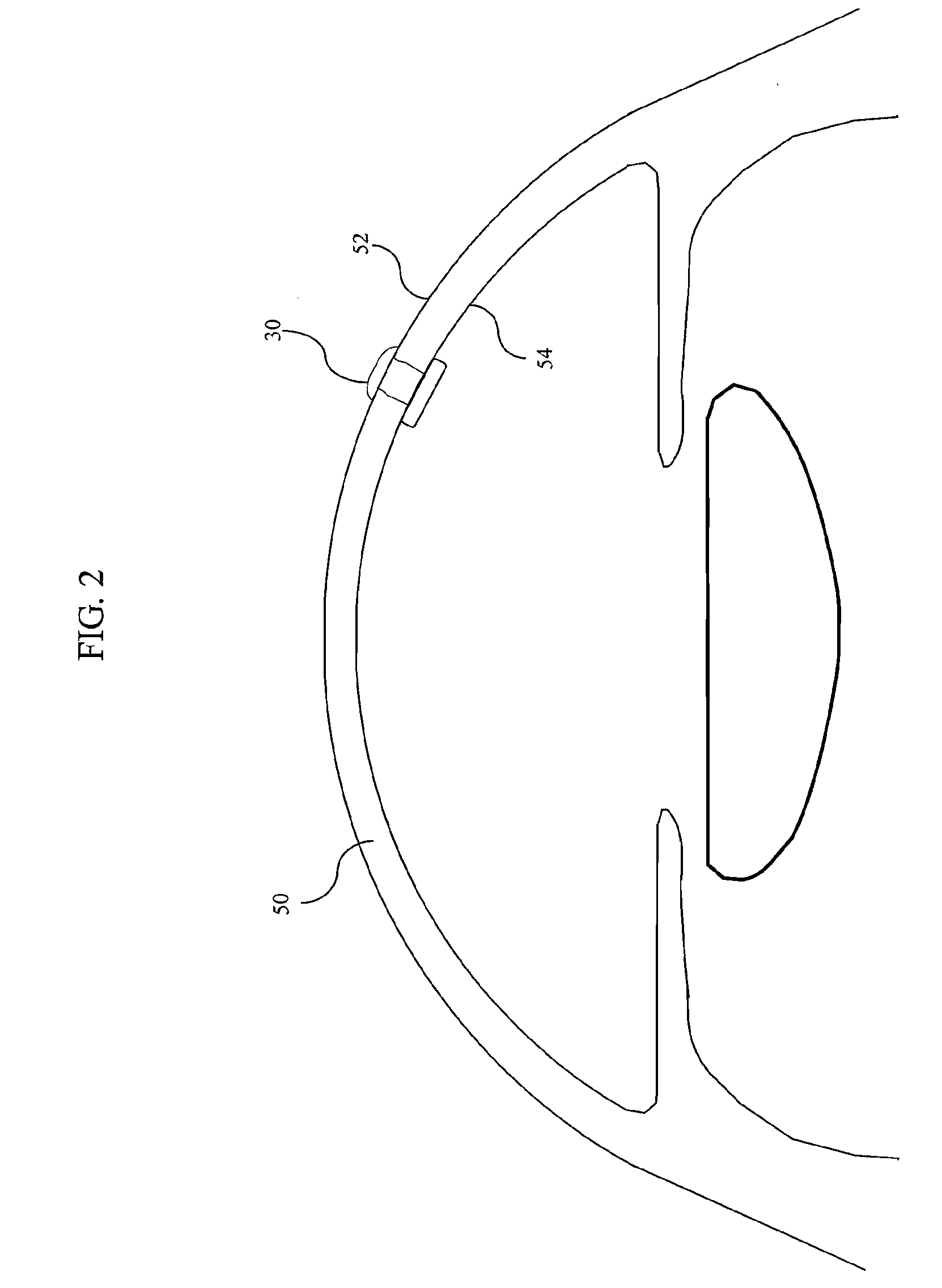Instruments and methods for implanting corneal implant via extra-and intra-cameral routes
a corneal implant and intra-cameral route technology, applied in the field of devices and methods for using ocular and non-ocular implants, can solve the problems of high intraocular pressure of glaucoma, high risk of failure, and high labor intensity of surgeons, and achieve the effect of enhancing shunt engagemen
- Summary
- Abstract
- Description
- Claims
- Application Information
AI Technical Summary
Benefits of technology
Problems solved by technology
Method used
Image
Examples
Embodiment Construction
[0041]Reference will now be made in detail to embodiments of the present invention, examples of which are illustrated in the accompanying drawings, wherein like reference numerals refer to the like elements throughout. The embodiments described explain the present invention by referring to the figures.
[0042]FIG. 1 illustrates a cross section of an ophthalmic shunt 30 according to an embodiment of the present invention, for example, a transcorneal shunt 30. The shunt 30 has a head 32 and a foot 34, each having the hole 36, 38 therein. A body 40 that forms a conduit extends between the head 32 and foot 34. According to one embodiment, the conduit 20 includes a filter 42 designed to restrict bacteria from infiltrating into the eye through the shunt and control a flow rate of aqueous humor from the anterior chamber of the eye to the outside surface of the cornea.
[0043]FIG. 2 illustrates a cross section of the ophthalmic shunt of FIG. 1 implanted in a cornea 50. As shown in FIG. 2, the t...
PUM
 Login to View More
Login to View More Abstract
Description
Claims
Application Information
 Login to View More
Login to View More - R&D
- Intellectual Property
- Life Sciences
- Materials
- Tech Scout
- Unparalleled Data Quality
- Higher Quality Content
- 60% Fewer Hallucinations
Browse by: Latest US Patents, China's latest patents, Technical Efficacy Thesaurus, Application Domain, Technology Topic, Popular Technical Reports.
© 2025 PatSnap. All rights reserved.Legal|Privacy policy|Modern Slavery Act Transparency Statement|Sitemap|About US| Contact US: help@patsnap.com



